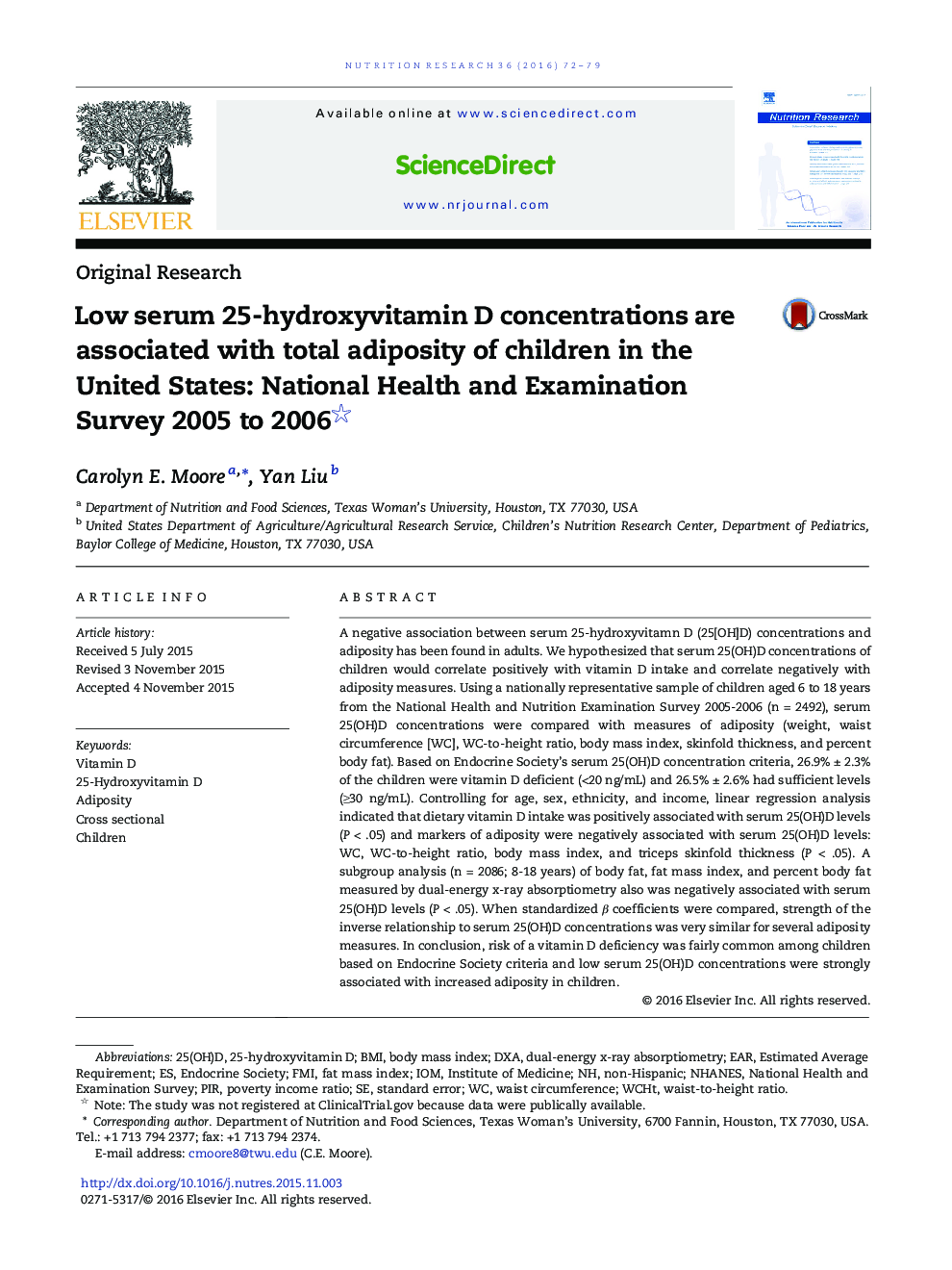| Article ID | Journal | Published Year | Pages | File Type |
|---|---|---|---|---|
| 2808920 | Nutrition Research | 2016 | 8 Pages |
A negative association between serum 25-hydroxyvitamn D (25[OH]D) concentrations and adiposity has been found in adults. We hypothesized that serum 25(OH)D concentrations of children would correlate positively with vitamin D intake and correlate negatively with adiposity measures. Using a nationally representative sample of children aged 6 to 18 years from the National Health and Nutrition Examination Survey 2005-2006 (n = 2492), serum 25(OH)D concentrations were compared with measures of adiposity (weight, waist circumference [WC], WC-to-height ratio, body mass index, skinfold thickness, and percent body fat). Based on Endocrine Society's serum 25(OH)D concentration criteria, 26.9% ± 2.3% of the children were vitamin D deficient (<20 ng/mL) and 26.5% ± 2.6% had sufficient levels (≥30 ng/mL). Controlling for age, sex, ethnicity, and income, linear regression analysis indicated that dietary vitamin D intake was positively associated with serum 25(OH)D levels (P < .05) and markers of adiposity were negatively associated with serum 25(OH)D levels: WC, WC-to-height ratio, body mass index, and triceps skinfold thickness (P < .05). A subgroup analysis (n = 2086; 8-18 years) of body fat, fat mass index, and percent body fat measured by dual-energy x-ray absorptiometry also was negatively associated with serum 25(OH)D levels (P < .05). When standardized β coefficients were compared, strength of the inverse relationship to serum 25(OH)D concentrations was very similar for several adiposity measures. In conclusion, risk of a vitamin D deficiency was fairly common among children based on Endocrine Society criteria and low serum 25(OH)D concentrations were strongly associated with increased adiposity in children.
